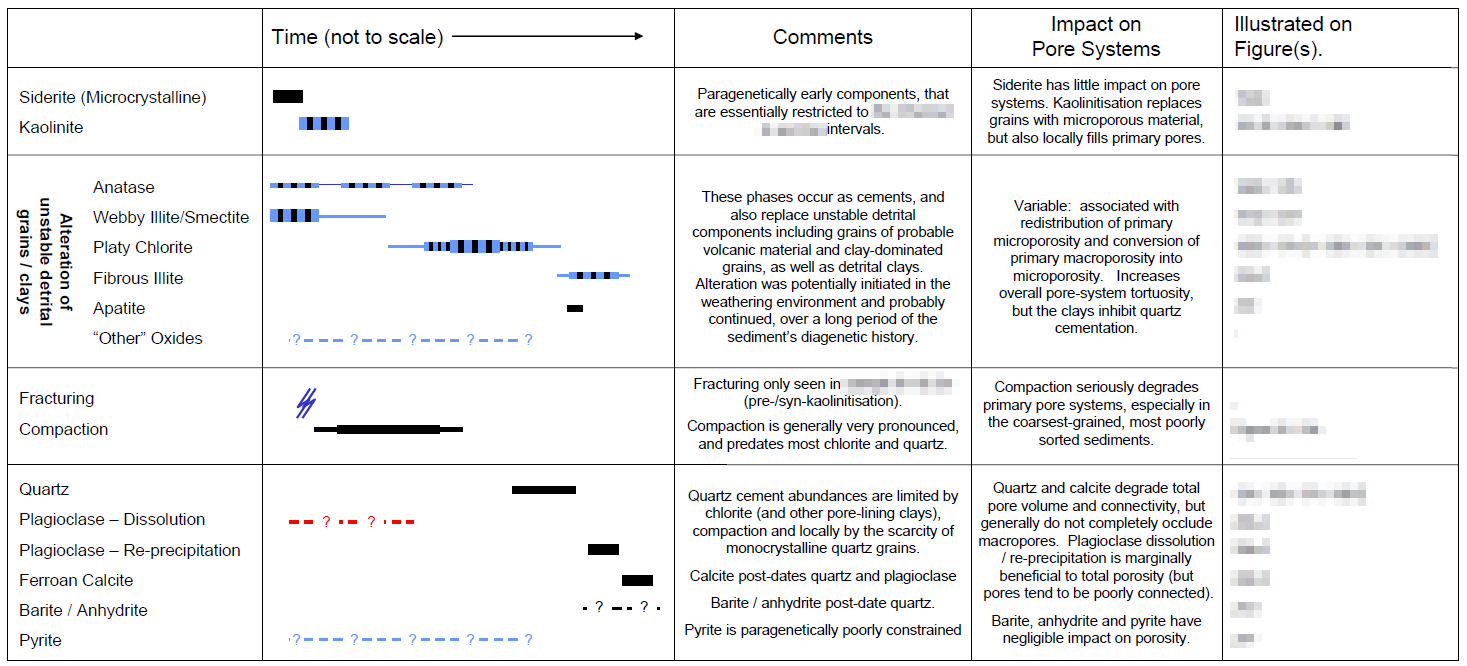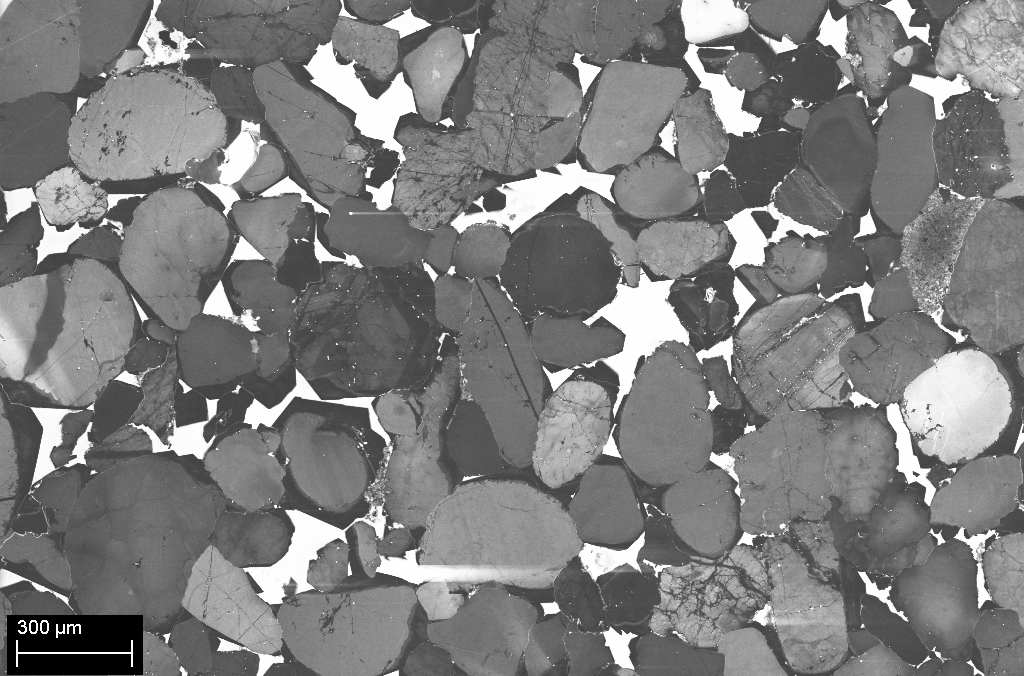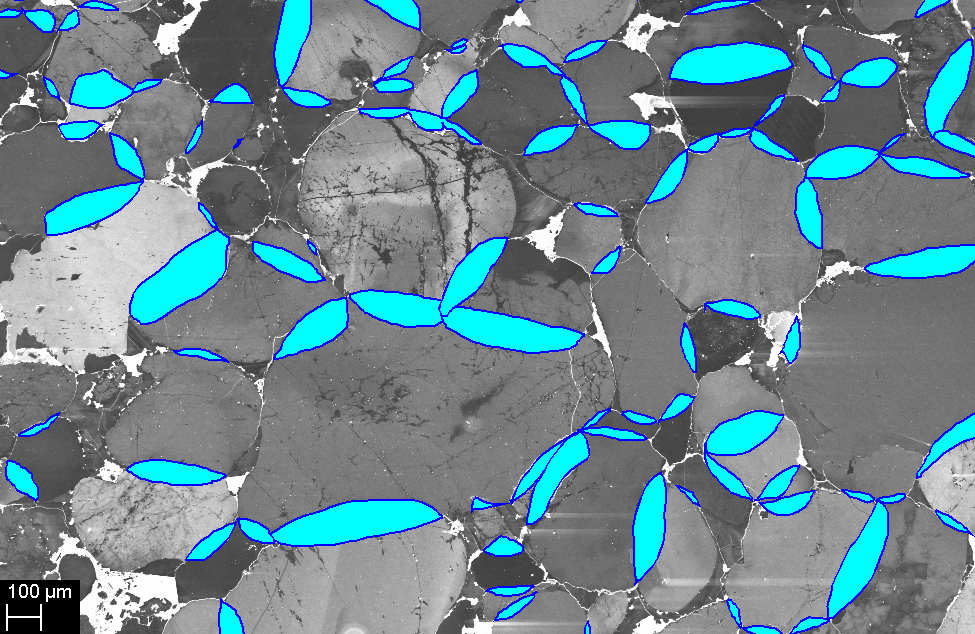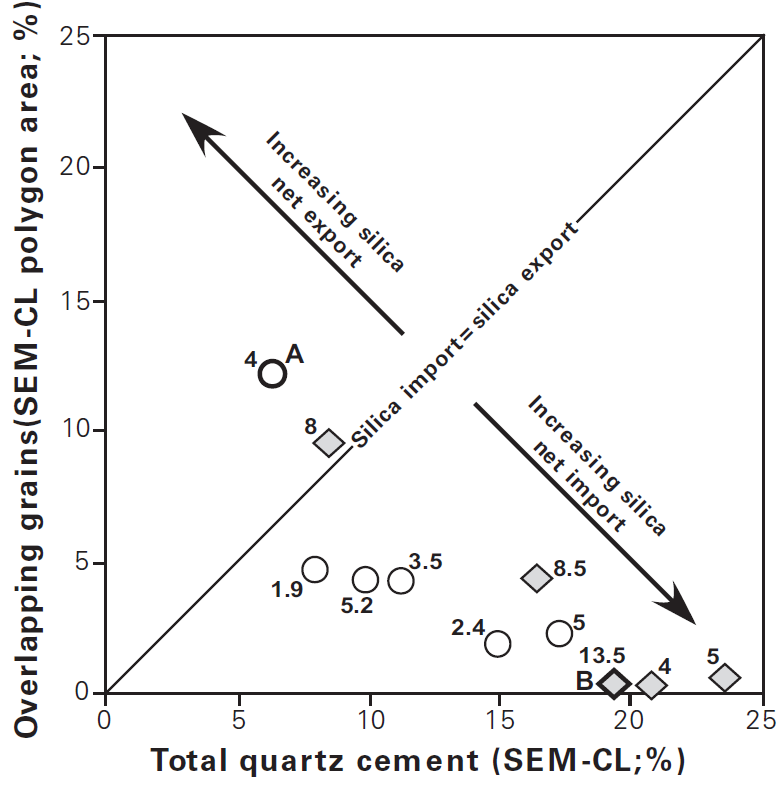Overview
The behaviour of sediments during burial and diagenesis will reflect:
![]()
- their original depositional settings (sedimentary facies and early diagenetic environments),
- their detrital mineralogies and texture , and
- their thermal, burial, fracture and fluid (including hydrocarbon filling) histories.
Certain detrital minerals will tend to dissolve or alter (commonly to clay minerals) under different conditions. Detrital clay minerals may undergo transformations during diagenesis and are likely to be augmented by clay minerals grown in response to the breakdown of other unstable detrital components. Finally, solid cements (msot notably carbonates and quartz) are likely to develop.
Understanding these relationships and the diagenetic processes that drive them aids in the upscaling of sandstone properties for reservoir quality assessment, prediction and modelling.
The nature of the diagenetic overprint is initially evaluated using routine optical microscopy and scanning electron microscopy (see modal analysis, scanning electron microscopy, and petrographical descriptions for further details). These observations may be supplemented by more detailed analyses, including fluid inclusion microthemometry, stable isotope analysis, X-ray diffraction, and cathodoluminescence microscopy.
Paragenesis
One of the primary outputs of studies of diagenesis is an understanding of the relative order in which different mineral cements developed and detrital components dissolved or altered. This is usually expressed as a paragenetic sequence or a cement stratigraphy.

The paragenetic sequence is determined based on observations of the relationships between different diagenetic minerals (and secondary pores). Standard thin-sections are typically stained to enable more confident recognition of different carbonate components. In some situations, optical microscopy alone can provide sufficent information to establish a paragenetic sequence. In others, more advanced petrographic methods may be required to resolve fine-scale paragenetic relationships and features of clay mineral diagenesis. Multiple generations of a single mineral phases may require cathodoluminesence to resolve (see Petrography page).

By linking diagenetic models to burial, fluid and thermal models (using stable isotope and fluid inclusion analyses), it can be possible to provide absolute temporal constraints on certain aspects of the paragenetic sequence.
Compaction Analysis
Features of the samples such as degree of grain contact elongation provide qualitative information on packing fabrics. For a more quantitative approach we collect modal anlaysis data in a way that enables it to be used to calculate intergranular volumes and more sophisticated measures of compation such as “compactional porosity losses” (which, amongst other things, corrects intergranular volumes for differences in primary porosity).
Silica Budgets


It is also possible to quantify the amount of mineral matter removed from, or added to, sandstones during diagenesis by using SEM-CL imaging to reconstruct original grain sizes and measure volumes of material lost at grain contacts. This enables assessment of (for example) whether a particular sandstone is a net importer- or net exporter of silica. See this publication for further details.
